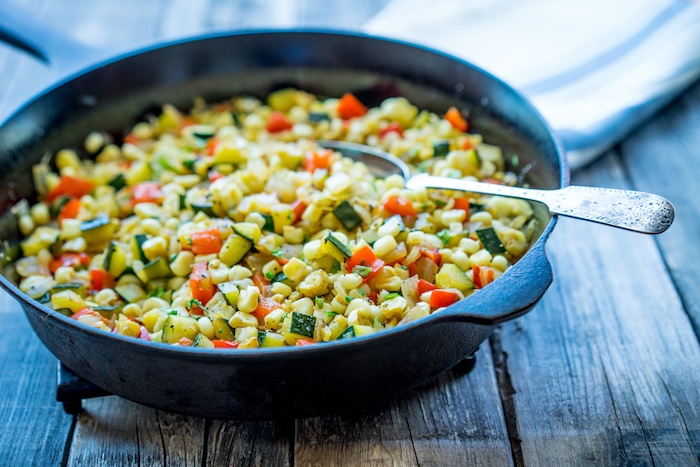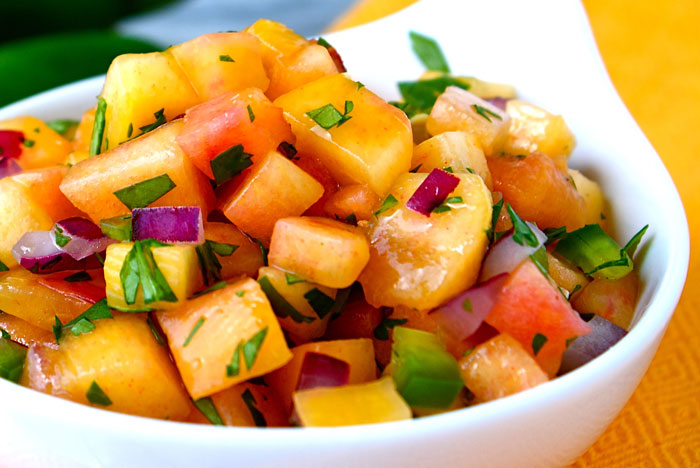If there are any doubts that local food is a hot commodity these days, you need look no further than the supermarket produce section. And when I say “supermarket” I mean the regular grocery store, not the likes of Whole Foods, which already has a long track record of prominently marketing local products in its aisles. These days, supermarket produce-department signs now tout “locally grown,” and in some cases even highlight specific growers.
 While I enjoy the convenience of buying produce from local growers when I zip into the store to pick up pasta and loo paper, I can’t help wondering if it’s a good deal for the farmers, too.
While I enjoy the convenience of buying produce from local growers when I zip into the store to pick up pasta and loo paper, I can’t help wondering if it’s a good deal for the farmers, too.
It can be, says Mark Marino, of Cinagro Inc., a Carmel, Calif., organic farm and garden design firm. Marino has worked as an organic farmer and horticulturist for over 30 years and knows the often-difficult economics of running a small farm. Selling crops through a variety of outlets–farmers’ markets, CSAs, retail outlets and restaurants–is smart business, he says.
“It affords the smaller to medium farmers a chance to find their economic balance,” says Marino. “It’s a lot like a stock portfolio–you want to have a good mix in there, so if one goes down, you can sell elsewhere.”
Which is the best? That depends.
CSA (Community-Supported Agriculture)
How it works: You buy a share in a farm’s crop for a season and pick up a box of produce at a set location each week. CSAs vary tremendously–some are farm-direct; others are coordinated by a third party. For the basics on how they work, check out “CSA 101.”
Upside: Financial liquidity for the farmer. “It’s huge for a farmer to have that money upfront and not have to pay interest on it,” says Marino.
“One of the advantages of selling through a CSA is that the farmer already has a market and doesn’t have to spend the time selling,” says Erin Barnett, director of LocalHarvest.org.
You get peak-season produce. While you may have a rough idea of what to expect each week, there are bound to be some surprises in the box. If you’re an adventurous cook, it’s a weekly version of a chef’s market-basket challenge in which you’re given ingredients and have to improvise what to do with them.
Downside: “CSAs tend to require a wide range of produce, and it can be challenging for the farmer to keep up,” says Barnett.
You don’t have much control over what arrives in the box each week and may also find yourself looking for ways to use a bumper crop of something you don’t love. CSAs may also deliver more than you can use up in a week, although some also offer half-shares that are ideal for single people and couples. You can also split a share with a friend or neighbor.
Best for: Those who want a direct relationship with a farm. Some CSAs even welcome shareholders to spend a day working on the farm.
Farmers’ Market
How it works: The farmer sets up a stand at a regularly scheduled pop-up market and sells direct to shoppers. Depending on the market, the farmer pays a small flat fee or a commission on sales.
Upside: “The beauty of the farmers’ market is that it’s cash,” says Marino. Farmers don’t have to give payment terms or wholesale prices (as they would to a store or restaurant) so more money stays in the farmer’s pocket.
Shoppers enjoy a selection of uber-fresh produce and often other farm-fresh goodies like eggs, poultry and meats. You’re likely to find more varieties. For instance, instead of one or two types of beets you’d find at the supermarket, a farmers’ market stand will offer three or four. You’ll also have better luck finding ultra-seasonal specialty items, like sunchokes or romanesco cauliflower.
Depending on the market, you may or may not find yourself chatting with the farmer. I live in Southern California, where some growers have stands at more than a dozen markets a week. By necessity, they hire workers to run the stands.
Downside: “Mother Nature,” says Marino. A rainy day will scare shoppers away, which means less money for the farmer.
I’m also spoiled because I live in Southern California, and farmers’ markets are year-round. But for shoppers in other parts of the country, farmers’ markets are only open part of the year. Still, as farmers’ markets gain popularity, many are extending their season for weekly markets and offering less-frequent markets in the off-season.
Best for: Shoppers who want to buy super-seasonal items direct from farmers but need more flexibility and choice than they’d get with a CSA membership.
Stores
How it works: Farmers sell their crops to stores at wholesale prices–usually 50% below retail.
Upside: It provides another outlet for the farmer. “If it’s raining this week at the farmers’ market and no one comes out, they’re still selling to the stores,” says Barnett. Also, the farmer doesn’t have to staff a farmers’ market stand or package multiple boxes for delivery at various pick-up locations for a CSA.
Shoppers–particularly those who aren’t likely to join a CSA or go to a farmers’ market–enjoy a convenient way to support local growers.
Downside: Farmers typically have to wait 30-60 days to get paid by the store. And even then a retailer may balk at paying for items that don’t sell or were mishandled after delivery. “It doesn’t happen often, but it can,” says Marino.
Best for: Shoppers who aren’t interested in a CSA and unlikely to make it to the farmers’ market regularly.
And what about price? Farmers’ markets and CSAs typically have the edge over grocery stores–but not always, says Marino. In any case, he adds, farmers’ markets and CSAs offer a connection to the land and the people who grow your food that’s priceless.













